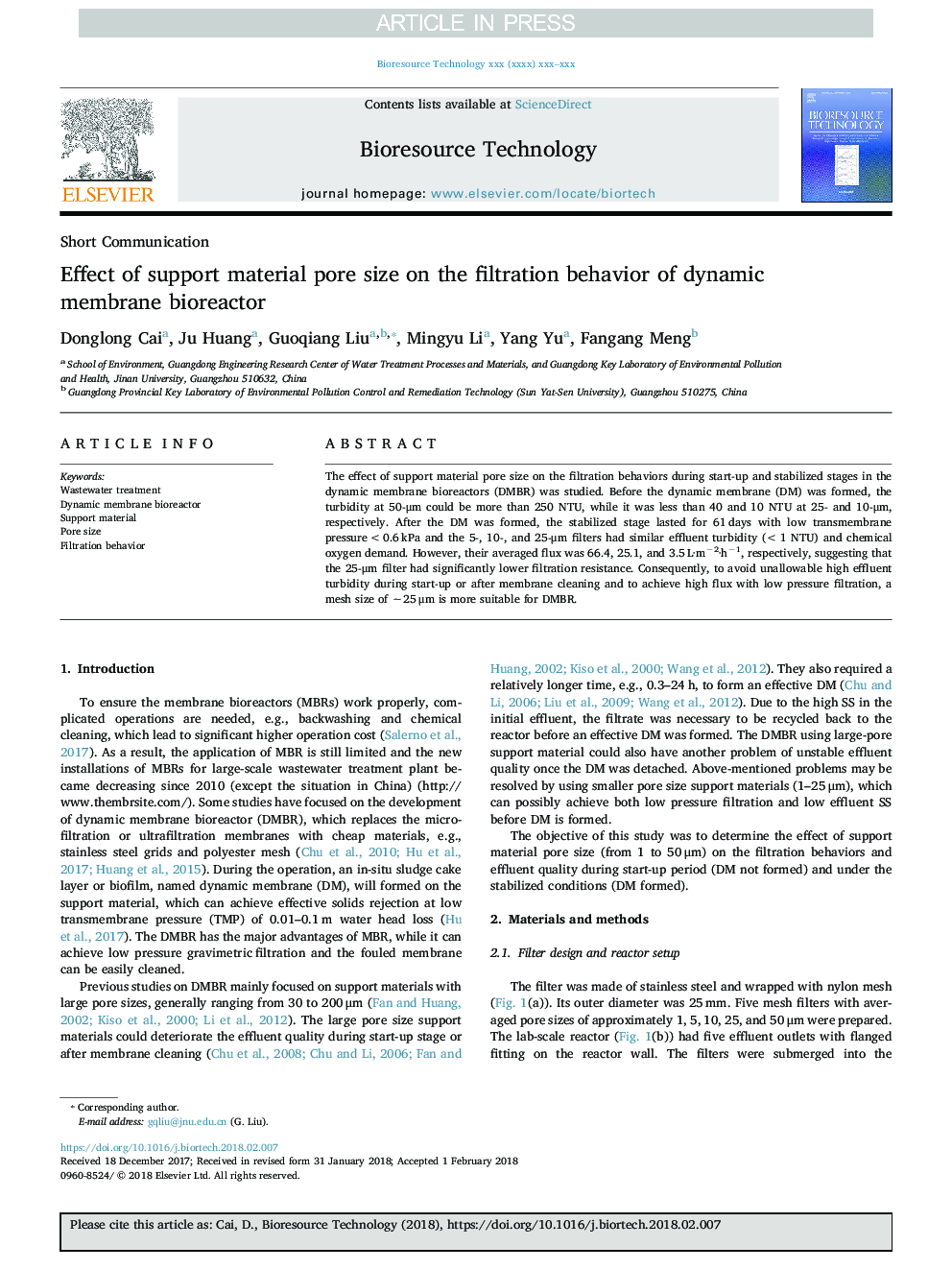| Article ID | Journal | Published Year | Pages | File Type |
|---|---|---|---|---|
| 7068113 | Bioresource Technology | 2018 | 5 Pages |
Abstract
The effect of support material pore size on the filtration behaviors during start-up and stabilized stages in the dynamic membrane bioreactors (DMBR) was studied. Before the dynamic membrane (DM) was formed, the turbidity at 50-μm could be more than 250 NTU, while it was less than 40 and 10 NTU at 25- and 10-μm, respectively. After the DM was formed, the stabilized stage lasted for 61â¯days with low transmembrane pressure <0.6â¯kPa and the 5-, 10-, and 25-μm filters had similar effluent turbidity (<1 NTU) and chemical oxygen demand. However, their averaged flux was 66.4, 25.1, and 3.5â¯L·mâ2·hâ1, respectively, suggesting that the 25-μm filter had significantly lower filtration resistance. Consequently, to avoid unallowable high effluent turbidity during start-up or after membrane cleaning and to achieve high flux with low pressure filtration, a mesh size of â¼25â¯Î¼m is more suitable for DMBR.
Related Topics
Physical Sciences and Engineering
Chemical Engineering
Process Chemistry and Technology
Authors
Donglong Cai, Ju Huang, Guoqiang Liu, Mingyu Li, Yang Yu, Fangang Meng,
